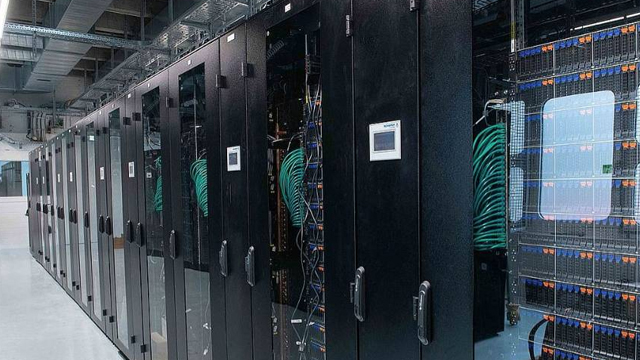The Cybermedia Center, Osaka University, in cooperation with NEC Corporation, announced today it will introduce a new cloud-linked High Performance Computing (HPC) and High Performance Data Analysis (HPDA) supercomputer system from NEC. This will replace the existing system provided by NEC, and is scheduled to commence operation in May 2021.
The new supercomputer system is composed of 1,520 general-purpose CPU nodes, each of which is a state-of-the-art general-purpose computational node with a 3rd Gen Intel Xeon Scalable processor (codename Ice Lake) featuring Intel Deep Learning boost technology, 42 GPU nodes, each of which is equipped with eight NVIDIA A100 Tensor Core GPUs that accelerate workload for AI, data analytics, HPC, and visualization and 36 VECTOR nodes, each of which features eight NEC SX-Aurora TSUBASA units that allow faster and highly efficient simulation of weather, seismic, hydraulic, and other phenomena. The new system is a hybrid supercomputer system that can deliver a theoretical performance of higher than 16 petaflops, centered on a storage appliance equipped with DDN EXAScaler high-performance parallel filesystems from DataDirect Networks, which provides 20 petabytes as a large-capacity data area and 1.2 petabytes as a high-speed data area.
NVIDIA Mellanox HDR InfiniBand provides the high speed, low latency, and smart connectivity between the nodes. The general-purpose CPU nodes are set to become the largest computational resource in Japan as a supercomputer system equipped with Ice Lake. Furthermore, the new supercomputer system is notable not only as a computing resource and data storage but also for tailor-made functionality that allows researchers to dynamically deploy and utilize the software stack of their choice. Moreover, the following new services for improving user friendliness, which accelerates and improves user-experience, are also being offered:
The new supercomputer system is centered on EXAScaler appliances equipped with DDN high-performance parallel filesystems that provide 20 petabytes of large data area and 1.2 petabytes of high-speed data area. The DDN EXAScaler appliances provide the university with a next-generation data aggregation infrastructure named Osaka University Next-generation Infrastructure for Open research and innovation (ONION) in conjunction with Cloudian’s Object-Storage HyperStore. ONION allows for a wide variety of data access protocols and significantly improves the flexibility of data usage. By facilitating the sharing of data with cloud services and other research institutions through ONION, the data before/after computation can be smoothly and flexibly shared among users.
The new supercomputer system provides a secure computing environment where users can make use of confidential data with assurance. This computing environment offers a secure staging function as an achievement of collaborative research and development between NEC and the Cybermedia Center, Osaka University. Highly confidential data in the storage on campus can be computed and analyzed by the compute nodes on the new supercomputer system, without the data being moved from storage. The secure computing environment also offers a secure partitioning function that dynamically separates and isolates the network for a specific user group and thus provides services that prevent other users from seeing the data and computations. Until today, when used by the medical field and companies, large-scale computing resources provided by supercomputing centers such as the Cybermedia Center, Osaka University could not be fully utilized because of several data security issues. By taking advantage of this secure computing environment, an isolated environment can be dynamically prepared, thus enabling research and development in areas where it was previously unavailable.
The new supercomputer system also provides cloud bursting capabilities that enable the on-demand use of the Oracle Cloud Infrastructure cloud service and the Microsoft Azure cloud service. The Cybermedia Center, Osaka University has had issues in the past with high utilization of on-premises computational resources and long waiting times. Switching part of the computation processes to resources on private cloud services makes it possible to respond to the growing demand for resources while providing the same capabilities as the on-premises computing environment. It also provides flexibility for new computational resources that continue to be updated on cloud services.
The Cybermedia Center at Osaka University has named the new supercomputer system SQUID (Supercomputer for Quest for Unsolved Interdisciplinary Datascience) to address unsolved interdisciplinary data science challenges for researchers supporting academia and industry in Japan. The Cybermedia Center, Osaka University will now work in cooperation with NEC, Intel, NVIDIA, DDN, Cloudian, Oracle Japan, and Microsoft Japan to construct the new supercomputer system for cloud-linked High Performance Computing and High Performance Data Analysis that works in conjunction with the cloud. They will provide new supercomputer systems that meet diverse computational needs from the fields of HPDA, such as machine learning and deep learning, as well as numerical calculations and scientific simulations in HPC fields. SQUID will support various research areas and researchers and contribute to groundbreaking future research analysis and findings.



